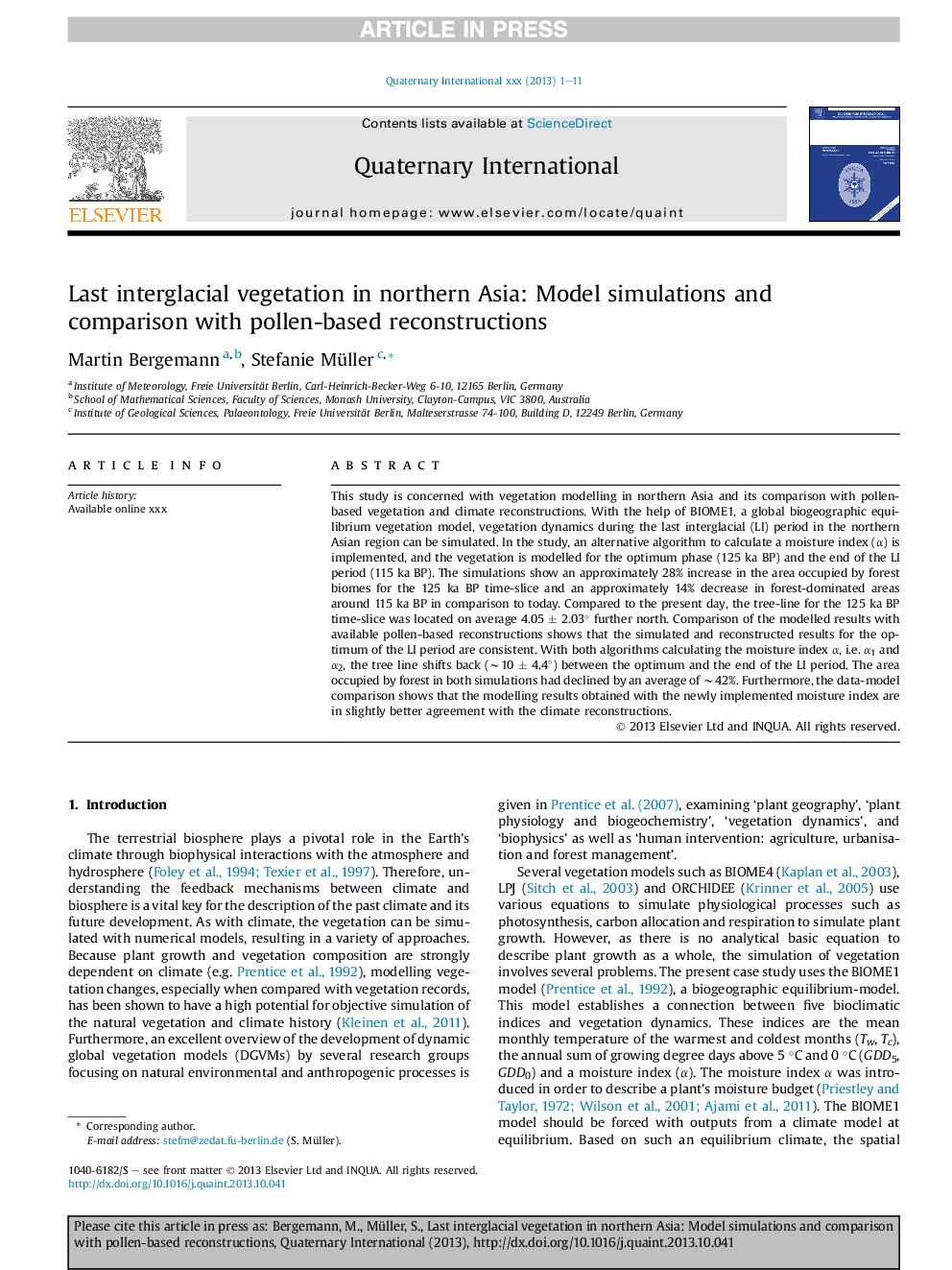| Article ID | Journal | Published Year | Pages | File Type |
|---|---|---|---|---|
| 7452178 | Quaternary International | 2014 | 11 Pages |
Abstract
This study is concerned with vegetation modelling in northern Asia and its comparison with pollen-based vegetation and climate reconstructions. With the help of BIOME1, a global biogeographic equilibrium vegetation model, vegetation dynamics during the last interglacial (LI) period in the northern Asian region can be simulated. In the study, an alternative algorithm to calculate a moisture index (α) is implemented, and the vegetation is modelled for the optimum phase (125 ka BP) and the end of the LI period (115 ka BP). The simulations show an approximately 28% increase in the area occupied by forest biomes for the 125 ka BP time-slice and an approximately 14% decrease in forest-dominated areas around 115 ka BP in comparison to today. Compared to the present day, the tree-line for the 125 ka BP time-slice was located on average 4.05 ± 2.03° further north. Comparison of the modelled results with available pollen-based reconstructions shows that the simulated and reconstructed results for the optimum of the LI period are consistent. With both algorithms calculating the moisture index α, i.e. α1 and α2, the tree line shifts back (â¼10 ± 4.4°) between the optimum and the end of the LI period. The area occupied by forest in both simulations had declined by an average of â¼42%. Furthermore, the data-model comparison shows that the modelling results obtained with the newly implemented moisture index are in slightly better agreement with the climate reconstructions.
Related Topics
Physical Sciences and Engineering
Earth and Planetary Sciences
Geology
Authors
Martin Bergemann, Stefanie Müller,
